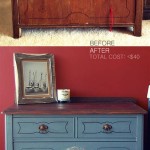Best Colors To Paint Bedroom Furniture
Selecting the optimal color to paint bedroom furniture is a significant design consideration. The color choice directly impacts the atmosphere of the room, influences mood, and contributes to the overall aesthetic coherence of the space. The selection process involves evaluating existing room décor, personal preferences, and the psychological effects associated with various colors.
The process of selecting a paint color involves balancing practical considerations with artistic aspirations. The furniture's style, the room's lighting conditions, and the size of the bedroom all play a role in determining which color will provide the most desirable outcome. A poorly chosen color can detract from the room's ambiance, while a well-selected color can elevate the space and create a cohesive and inviting environment.
Before initiating the painting process, it is essential to assess the existing furniture and the room it will occupy. Factors such as the type of wood, the current finish, and any existing embellishments need to be taken into account. Furthermore, the room's existing color palette, including wall color, flooring, and textiles, provides a framework for selecting a complementary or contrasting hue.
Understanding Color Psychology
Color psychology explores the impact of different colors on human emotions and behavior. This field of study provides valuable insights for selecting colors that can enhance the desired mood and atmosphere in a bedroom. By understanding the psychological associations attached to different colors, the selection process can be more informed and purposeful.
Blues and Greens: These colors are often associated with tranquility, peace, and nature. Light blues and greens evoke feelings of serenity and relaxation, making them suitable for creating a calming bedroom environment. These colors are particularly effective in promoting restful sleep and reducing stress levels. They are also versatile and can be paired with various accent colors to create a personalized aesthetic.
Neutrals (Grays, Whites, and Beiges): Neutral colors provide a versatile and adaptable foundation for bedroom furniture. These colors are often chosen for their ability to complement a wide range of decorating styles and color schemes. White provides a clean, classic look, while gray offers a more modern and sophisticated feel. Beige adds warmth and comfort to the space. The adaptability of neutral colors allows for easy integration with other room elements and allows for easy changes to accent colors in the space as desired.
Warmer Colors (Yellows, Oranges, and Reds): While warm colors can add vibrancy and energy to a space, they are typically used more sparingly in bedrooms. These colors can be stimulating and may not be conducive to relaxation and sleep. If warm colors are favored, softer shades or muted tones are preferable. For example, a pale yellow or a dusty rose can add warmth without being overwhelming.
When selecting a color, understanding the specific shade and undertone is crucial. A color may appear different under varying lighting conditions. Therefore, testing the color in the room's natural and artificial light is recommended before making a final decision. Consider obtaining paint samples and observing how they appear at different times of the day and under different lighting sources.
Considerations for Furniture Style and Room Design
The style of the furniture and the overall design of the room should also influence color selection. Certain colors are better suited to specific furniture styles and aesthetic themes. Aligning the color of the furniture with the room's design principles creates a more harmonious and visually appealing space.
Modern Furniture: Sleek, modern furniture often benefits from neutral or monochromatic color schemes. Grays, blacks, and whites create a sophisticated and minimalist look. Accent colors can be introduced through accessories and textiles to add pops of color and personality. Alternatively, bold, unexpected colors can be used to create a statement piece that becomes a focal point of the room.
Traditional Furniture: Traditional furniture often features intricate details and ornate designs. Classic colors such as creams, off-whites, and soft blues complement the traditional aesthetic. Antique finishes and distressed techniques can further enhance the vintage charm of the furniture. Darker wood tones paired with rich, jewel-toned fabrics can also create a luxurious and elegant atmosphere.
Rustic Furniture: Rustic furniture embraces natural materials and a weathered aesthetic. Earthy tones such as browns, greens, and beiges are ideal for complementing the rustic style. Distressed paint finishes and natural wood stains enhance the furniture's organic texture. The aim is to create a warm and inviting space that evokes a sense of connection to nature.
The room's size and lighting conditions are also crucial factors. Lighter colors tend to make a room appear larger and brighter, while darker colors can create a more intimate and cozy atmosphere. In smaller bedrooms, lighter colors are generally preferred to maximize the sense of space. In larger bedrooms, darker colors can be used to create a more dramatic and enveloping ambiance. Ensure adequate lighting is present regardless of the shade being selected, as insufficient lighting will detract from the visual impact of whatever design decision is ultimately made.
Consider the existing elements of the room. Selecting a color that complements the wall color, flooring, and textiles is essential for creating a cohesive design. Use a color wheel to explore complementary or analogous colors that create a harmonious palette. Alternatively, you can opt for a contrasting color scheme to create visual interest and add depth to the room.
The Painting Process
Proper preparation is paramount for achieving a professional and durable paint finish. Thoroughly clean the furniture to remove any dirt, dust, and grease. Sand the surface to create a smooth and even base for the paint. Apply a primer to improve adhesion and ensure uniform color coverage. The painting process itself entails careful execution to achieve a smooth and lasting finish.
Preparation: Cleaning the furniture is crucial to remove any contaminants that could interfere with the paint's adhesion. Use a mild detergent and water to scrub the surface thoroughly. Rinse with clean water and allow the furniture to dry completely. Sanding the surface will create a slightly rough texture that allows the primer to grip the wood more effectively. Use a medium-grit sandpaper to smooth out any imperfections and remove any existing finish.
Priming: Applying a primer is a vital step in the painting process. Primer seals the wood, prevents the paint from being absorbed unevenly, and provides a smooth surface for the paint to adhere to. Select a primer that is specifically designed for the type of wood being painted. Apply the primer evenly using a brush or roller and allow it to dry completely before proceeding to the painting step.
Painting: Choose a high-quality paint that is suitable for furniture. Acrylic latex paints are a popular choice due to their durability, ease of application, and low odor. Apply the paint in thin, even coats, allowing each coat to dry completely before applying the next. Use a brush or roller to achieve a smooth and consistent finish. Avoid applying too much paint at once, as this can lead to drips and runs. Two or three coats of paint may be required to achieve full coverage and a rich, vibrant color.
Finishing: Once the paint has dried completely, consider applying a clear coat of sealant to protect the finish and add durability. A sealant will also make the furniture easier to clean and maintain. Select a sealant that is compatible with the type of paint used. Apply the sealant evenly using a brush or spray gun. Allow the sealant to dry completely before using the furniture. Inspect the finished product thoroughly to ensure that there are no imperfections. Touch up any areas that need additional attention.
Painting bedroom furniture offers a cost-effective and creative way to transform the room's aesthetic. By carefully considering color psychology, furniture style, and room design, a personalized and inviting space can be created. Thorough preparation and attention to detail during the painting process will ensure a professional and long-lasting finish. The resulting furniture will complement the broader design of the bedroom, resulting in an aesthetically pleasing and functional space.

10 Best Painted Furniture Colors

16 Of The Best Paint Colors For Painting Furniture

What Color To Paint Your Furniture 25 Diy Projects Craftionary

What Color To Paint Your Furniture 25 Diy Projects Craftionary

16 Of The Best Paint Colors For Painting Furniture

16 Of The Best Paint Colors For Painting Furniture Colorful Painted Projects

What Color To Paint Your Furniture 25 Diy Projects Craftionary

16 Of The Best Paint Colors For Painting Furniture

Painted Bedroom Furniture And Main Reveal Confessions Of A Serial Do It Yourselfer

Bedroom Paint Color Ideas Schemes Planner 5d








